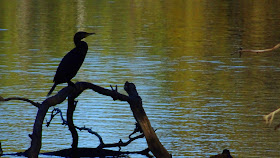Today, at 4.42 pm, a 4-wheel drive vehicle attack on a busy pedestrian crossing in Melbourne’s Flinders Street (at the T-intersection with Elizabeth St) left 19 people in hospital, six of them critically injured. A pre-school-aged child who was injured with severe head trauma is now stable.
Police have announced that they believe this attack was the work of a mentally ill drug addict and it is not being treated as terrorism. The driver is thought to be a mentally ill man with a history of addiction to the drug ice. It is understood he has no known links to extremism and is not known to counter-terrorism authorities.
A second man pictured arrested at the scene was unconnected to the attack. He was video-taping the incident and was arrested because police found three knives in a bag in his possession. No other weapons were found in the offender’s car, the vehicle itself of course being weapon enough in the driver’s control.
In these days right before Christmas there will be many households in our city that will be affected by this horrible act of violence. The families and friends of the victims first and foremost of course, but also the family of the offender who must grieving not only for their child but for all those he injured. Add to them every other rational human being who observes this and similar senseless acts of violence and cannot help but feel revulsion, abhorrence and outrage.
All we Melburnians feel rather numb seeing this is the second incident of this type that has occurred in our city this year. On January 20 earlier this year, a car running wild in the Bourke St mall caused the death of six people and injured 28 others. The driver, Jim Gargasoulas 27 years old was charged but has pleaded “not guilty”, his defence being “mental illness”.
Our city is changing, our world is changing, people are changing and I’m afraid that things are not changing for the better. Melbourne was a beautiful city, its people mostly friendly, courteous and law-abiding. In the last 30 years we have seen Melbourne, The Large Modern City – the Most Livable City in the World slowly becoming Melbourne the Post-Modern Megalopolis: Overcrowded, noisy, congested, riddled with crime, corruption, and home of violence related to drugs, mental illness, homelessness, racial tensions, and the ever-present threat of terrorism hanging above our heads.
We have created a monster by allowing our city to become this. Corporate and individual greed, political expediency, public insouciance and a misguided desire to be a “World City” has brought us here. Now we pay the price. Melbourne you have come of age, now you belong there with all the other megalopoleis of the world. Megalomania deserves its own special reward - the loss of soul. I hope against hope that this incident is the last that we shall see, but logic says otherwise - more such incidents are to follow, I think...
My Melbourne is no longer Fresh, and I can no longer post a Daily beautiful offering in a city that is becoming increasingly more and more dehumanized. I still live here because this is my home and I shall try to find pockets of sanity to insulate myself from the increasing madness of the city. I shall try to still find beauty where I can, and continue to associate myself with people who are rational, open-minded, tolerant, charitable and altruistic. I shall continue to try to change my world for the better in any way I can. It is becoming more and more difficult...
This is the last entry for Melbourne Fresh Daily. Thank you to all the loyal followers and readers who have accompanied me here since 11/11/2011. It’s been quite the ride.
My best wishes to you and your loved ones for a peaceful Christmas and a calmer, better, saner 2018.


















































